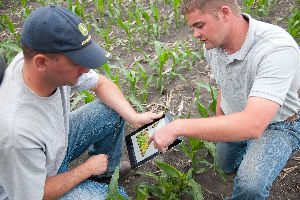Wet Weather in the Southeast Posing Problems for Crops

Wet weather in the Southeast is keeping farmers out of fields and could lead to disease formation, reducing yields.
According to a recent Accuweather update, a recent string of drenching downpours has saturated much of the Southeast’s soil, posing a number of threats to crops in the area.
Projections of continued rainfall throughout most of August will likely continue to threaten southeastern crops, making it difficult for farmers to get into the fields, increasing the potential for vegetable rotting, and creating ideal conditions for mold and fungus-related disease formation that could cause damage. Agricultural Weather Expert Dale Mohler explains in the update that "Most crops need that reasonable balance between sunshine, warmth and rainfall. Every type of fruit and vegetable has its particulars, but for most crops, too much of one thing can cut yields and diminish the taste."
In an attempt to fight these diseases, farmers in the southeast are applying fungicide to crops; however, the frequency of the rainfall is often times washing the applicants right off the areas where applied.
The wet conditions could also impact the size and taste of fruits and vegetables grown in the area, but the effects are likely to only be felt in local areas. Economist Richard Volpe, Ph.D., in the USDA's Economic Research Division believes “problems with growing conditions in a particular region are more likely to have impact on prices on a local or regional basis, rather than a national basis.”
As the rain continues to fall in the southeast, soil moisture levels are keeping farmers out of the fields and are increasing the risk of mold and fungus-related disease formation, which could reduce yields if not treated.